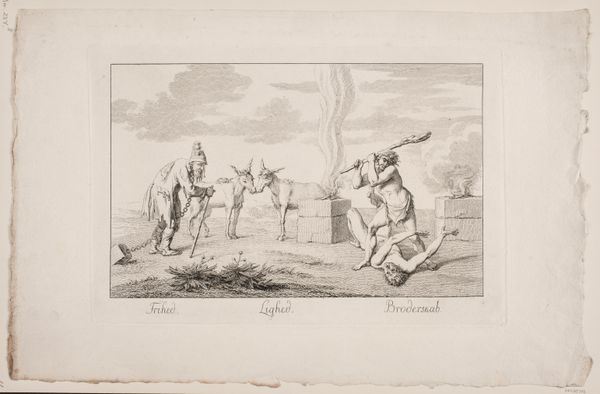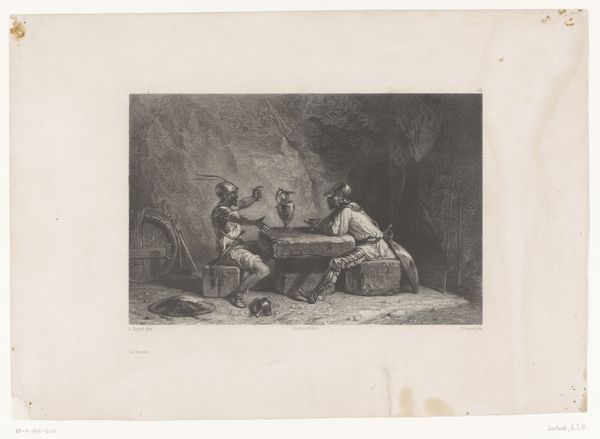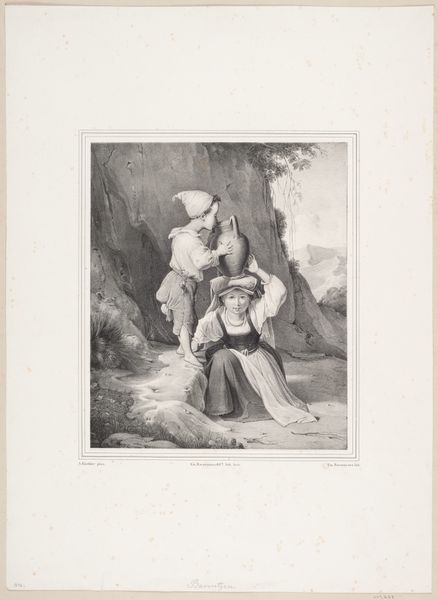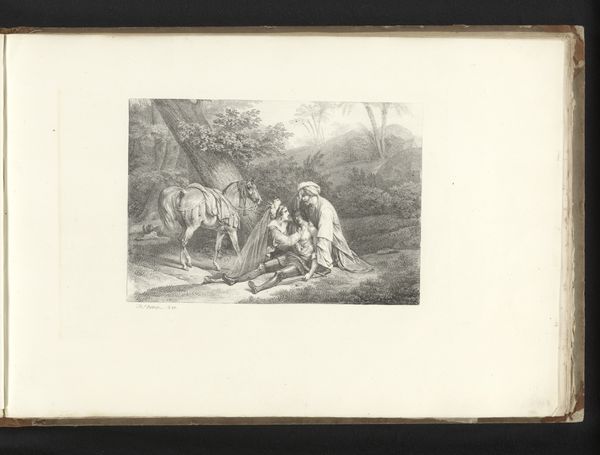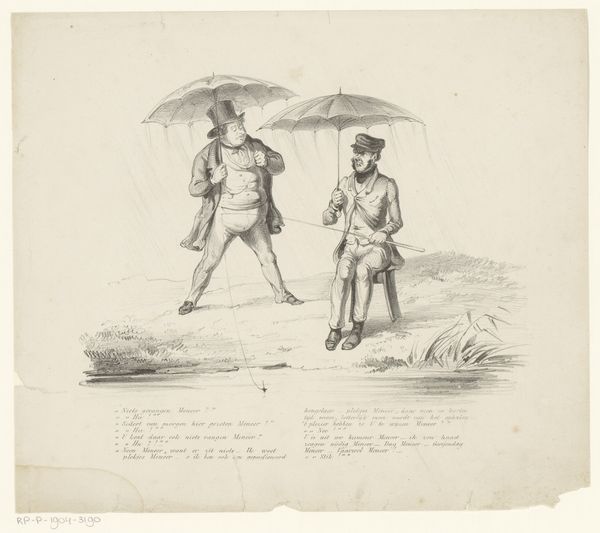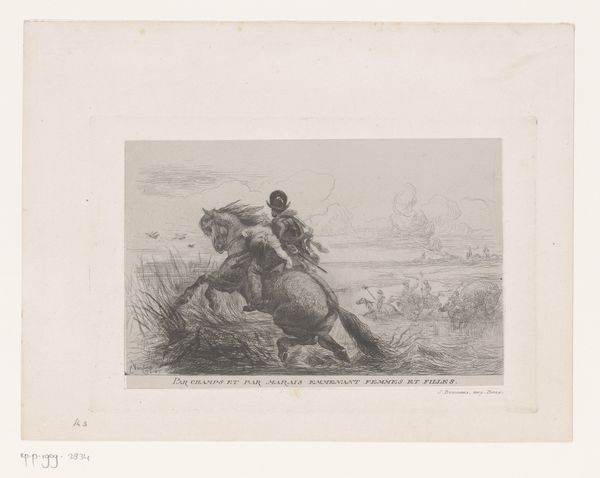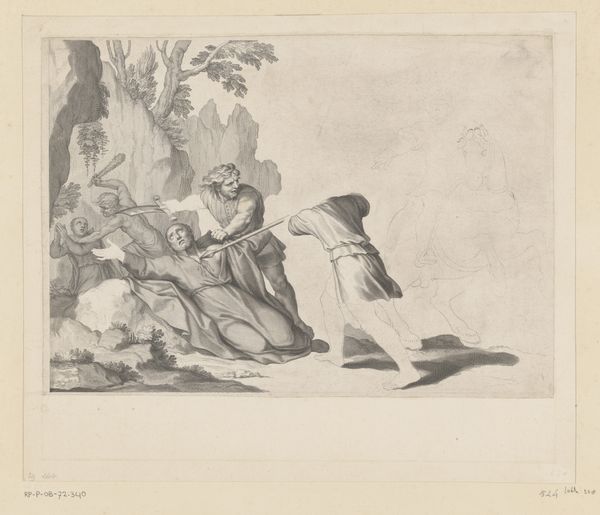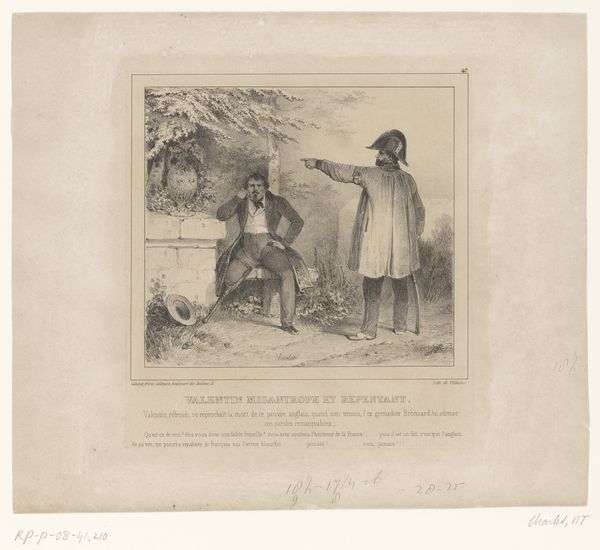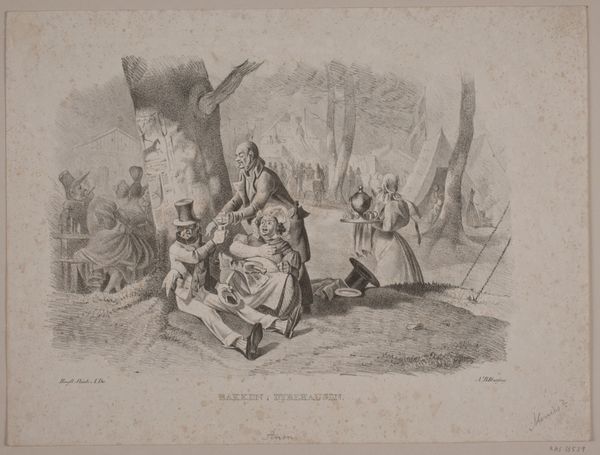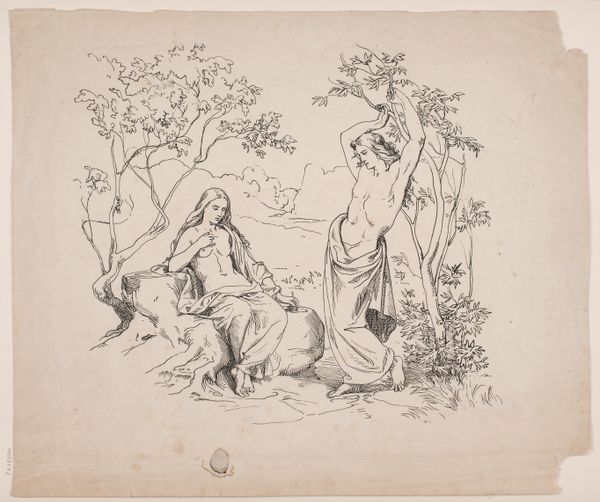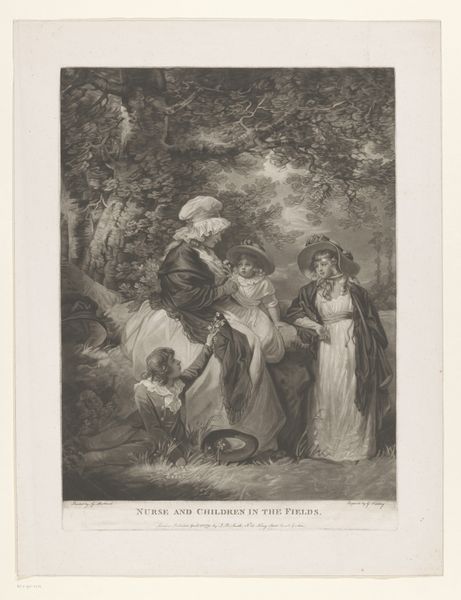
Kongsgården, pag. 69, illustration til Christian Winthers "Hjortens Flugt" 1856
0:00
0:00
Dimensions: 360 mm (height) x 553 mm (width) (bladmaal)
Curator: Ah, this piece whispers secrets of another time. Lorenz Frølich's illustration from 1856, "Kongsgården, pag. 69, illustration til Christian Winthers 'Hjortens Flugt,'" a lithograph—a moment caught in dreamy pencil strokes. It lives here at the SMK. What do you see? Editor: It feels… staged? Like a theatrical production caught mid-scene. The light is beautifully subtle, but the expressions are so posed, so deliberate. I get a strong Romantic drama vibe, but filtered through a very particular lens. Curator: Exactly! Frølich was deeply invested in illustrating Danish history and folklore, tapping into that vein of national romanticism so prevalent in the 19th century. Think of it as a visual soundtrack to Winther's poem. This specific scene captures a pivotal moment, filled with symbolic gestures. He really brings that Danish Golden Age painting style to this printed image. Editor: And who is the subject of this scene? She is directing him away… or telling him a tall tale about the nature scene around her. Curator: Precisely. This portrays a story where deception and appearances were employed to get this knight away from something--possibly his love or home-- that his peers disapprove of. In many ways, the themes represented mirror the political tensions happening at this point of history. The question that history has to face and interpret, whether there will be true transparency in these issues, is captured nicely, in my opinion. The fog of war, so to speak. Editor: And the use of lithography adds another layer of complexity, doesn't it? A medium capable of mass production, yet rendered with such delicate, personal touch. Did that impact the artwork's impact to common audiences? Curator: Oh, absolutely. It democratized art. Suddenly, these stories weren't just for the wealthy elite who could afford original paintings. Ordinary people could own a piece of their national narrative. That accessibility, the potential for these images to circulate widely, fuelled the romantic nationalism. Editor: I see that diffusion really giving this moment a wider social impact. But let me say: while understanding those historicist influences helps decode the work, my biggest reaction now is, to wonder… if I saw the source material from that time, what would that change? It is interesting that that historical context changes my feelings and initial impression about the artwork, now! Curator: A perfect reminder, I suppose, that art's magic lives in that conversation between history, emotion, and the ever-changing present. Editor: Indeed. Frølich’s lithograph does more than tell a story; it opens a window to the dreams and the realities of a nation forging its identity.
Comments
No comments
Be the first to comment and join the conversation on the ultimate creative platform.


